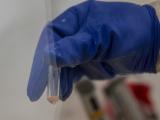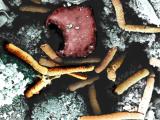Jul 20, 2011 (CIDRAP News) – The Department of Justice (DOJ) yesterday sought to settle confusion over court documents in the civil trial related to an anthrax victim's death, which initially seemed to undercut earlier FBI findings about government microbiologist Bruce Ivins' role in the 2001 anthrax letter attacks.
Court documents in the trial that portrayed the DOJ as casting doubt on Ivins' ability to make anthrax powder at the US Army Medical Research Institute of Infectious Diseases lab in Fort Detrick, Md., were first reported on by an investigative group from ProPublica, an independent, nonprofit journalism group; the Public Broadcasting Service (PBS) program Frontline; and McClatchy Newpapers. The DOJ documents were filed on Jul 15 in a US District Court case in Florida brought by the family of a Boca Raton photographer who was the first of five people to die in the anthrax attacks, the investigative team reported in their original Jul 18 report.
In a second report yesterday, the investigative group said that the DOJ filed a 7-page correction that retracts statements questioning the FBI's findings but does not strike testimony from individual government researchers who challenged the FBI's findings about Ivins.
The DOJ's original Jul 15 court filings said the biocontainment area of Ivins' lab did not contain the equipment he'd need to transform liquid anthrax into powder and did not explain how he could have prepared it, according to the investigative group's first report.
The DOJ's assertions appeared to be a startling new development in the anthrax case and, according to the investigative report, raised complaints at the FBI and among prosecutors who handled the criminal case.
Ivins committed suicide in July 2008 while the FBI was preparing to file charges against him. One month later the FBI announced its conclusion that Ivins perpetrated the attacks in the fall of 2001, which led to 22 anthrax cases and 5 deaths. After some experts disputed the FBI's findings, FBI Director Robert Mueller asked the National Academy of Sciences (NAS) to conduct an independent scientific review.
In February the NAS released its review, saying that the available scientific evidence by itself was not adequate to allow a definitive conclusion about the source of the anthrax spores used in the attack. Though the FBI's methods did show genetic similarities between the letter samples and anthrax spores that were stored in a flask in Ivins' lab, the methods didn't rule out possible explanations other than a direct link.
Yesterday DOJ spokesman Dean Boyd said in a statement that DOJ civil division attorneys submitted "inaccurate information" in the Jul 15 court filings and that the DOJ and the FBI back their findings that Ivins had the equipment needed to make the spores, according to the ProPublica report. Yesterday's correction said Ivins had ordered his own lyophilizer machine, which could be used to dry anthrax spores, and that it was labeled as "property of Bruce Ivins" and kept in a nearby biocontainment suite, the report said.
Boyd's statement said the DOJ and FBI "have never wavered from the view that Dr. Ivins mailed the anthrax letters," according to the ProPublica report.
The investigative reporters and other media outlets have suggested that the DOJ is likely poking holes in the case against Ivins as a strategy to defend the government in the civil suit, which claims negligence. For example, the Frederick (Md.) News Post reported yesterday that in a motion to dismiss the case, the DOJ argues that any doubt about Ivins' guilt would make it more difficult for the victim's family to show government negligence.
The ProPublica group said it's unclear how the DOJ's civil court filings came to be so at odds with the case put forward by its prosecutors, and that the DOJ has not offered an explanation.
See also:
Jul 18 ProPublica report
Jul 19 ProPublica report
Feb 15 CIDRAP News story "NRC: Data insufficient for firm conclusion in anthrax case"
Jul 19 Frederick News Post story


















